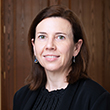What Causes a Country's Standard of Living to Rise?
One way to measure the improvement in the living standards of a country is by looking at the growth rate of its gross domestic product (GDP) per capita.1 This measure can be decomposed into:
- The growth rate of GDP per hour worked (a measure of labor productivity)
- The growth rate of the number of hours per capita (a measure of the extent of labor utilization)
The latest data released by the Organization for Economic Cooperation and Development (OECD) on changes in living standards and labor utilization reveal some interesting facts about labor productivity in these countries.2 The figure below shows the annual growth rate of labor productivity and labor utilization for the OECD countries in 2014.

As an example, Turkey’s labor utilization grew around 4 percent in 2014, whereas it experienced a drop in labor productivity of about 2 percent. These numbers imply that the improvement in living standards in Turkey—as measured by GDP per capita, which increased by 2 percent—was mainly driven by an increase in labor utilization.
A similar pattern emerges for Korea, New Zealand, Portugal and Iceland. All these countries experienced positive growth in their living standards driven mainly by an increase in the number of hours per capita, as labor productivity decreased in all these countries. Low labor productivity growth could be the result of an increase in the employment of low-productivity workers or of lower technological innovation in the country. It could also reflect a lower use of capital in the country.
For example, Luxembourg and Ireland also experienced an improvement in their living standards. In these countries, however, the improvement was driven by an increase in labor productivity. In Ireland, for instance, both labor productivity growth and an increase in labor utilization contributed to an improvement in the living standards of the country, whereas in Luxembourg, hours worked per capita actually dropped.
Whether the increase in GDP per capita of a country has been driven mainly by productivity or utilization is important for the prospects of growth of the country. To the extent that productivity reflects advances in technology, increases in this measure are an indication of the potential of the economy to grow in the future.
Notes and References
1 Or the growth rate of the total value of output that the average person in a country produces.
2 Organization for Economic Cooperation and Development. “Labor productivity and utilization (indicator).” OECD Data, 2015.
Additional Resources
- On the Economy: International Asset Prices and Trade in Intermediate Goods
- On the Economy: Improving Business Climates and Escaping the Middle-Income Trap
- On the Economy: Which Regions Have Recovered from the Great Recession?
Citation
Ana Maria Santacreu, ldquoWhat Causes a Country's Standard of Living to Rise?,rdquo St. Louis Fed On the Economy, Dec. 28, 2015.
This blog offers commentary, analysis and data from our economists and experts. Views expressed are not necessarily those of the St. Louis Fed or Federal Reserve System.
Email Us
All other blog-related questions


